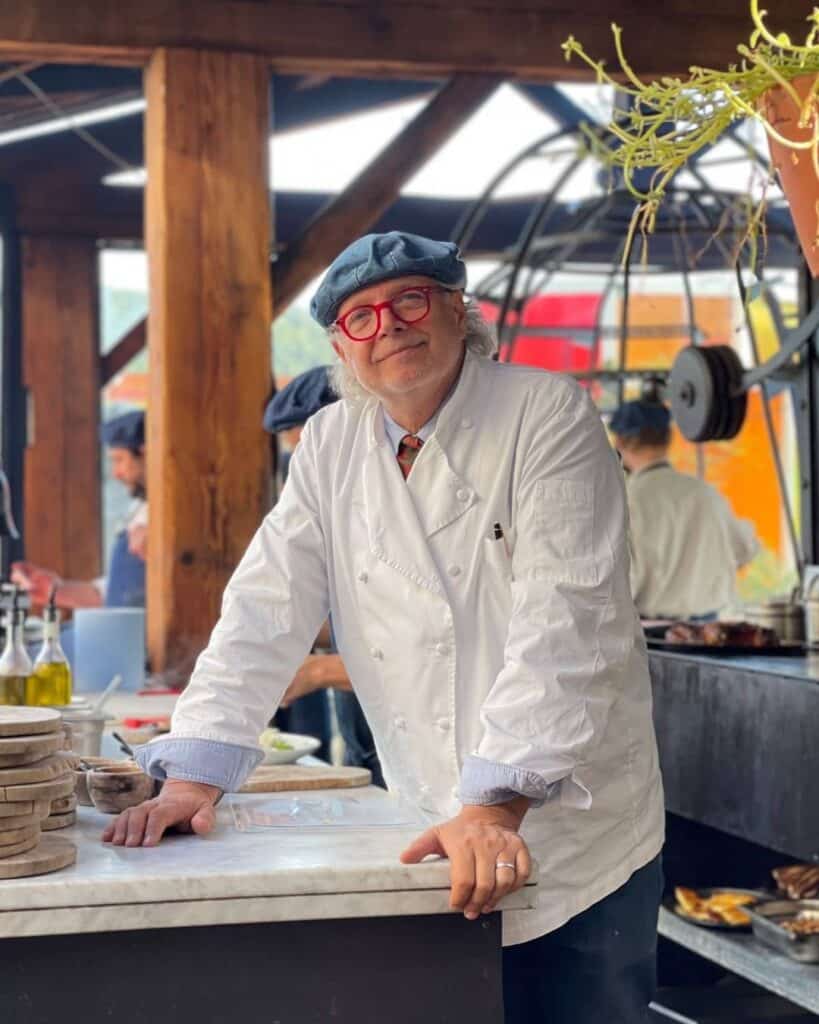Grilling, known as “asado” in the Latin American context, is not just a cooking method – it is a deeply rooted tradition, a form of artistic expression and, above all, an opportunity to celebrate and enjoy the company of friends and family. In Latin America, barbecuing isn’t
a quick meal. It’s a slow, enjoyable process that emphasises the importance of good food and good company. So, the next time you’re firing up the barbecue, why not try our tips
and experience a little bit of Latino culture?
Grilling the Latino Way
In Latin America, the task of barbecuing meat is typically a male one, with the “asador” or barbecue master presiding over the flames to deliver perfectly cooked, flavourful meat. Despite regional variations, the technique generally emphasises the patient, slow roasting of large cuts
or whole animals over wood or charcoal. In beef-loving Argentina, the asador starts the fire hours before guests arrive, turning the wood into glowing coals that give the slow-cooked meat a delicious smoky flavour. The angled design of the grill allows for even cooking as the fat drips slowly, preventing flare-ups. Meanwhile, in Mexico, carne asada is a popular delicacy at social gatherings. Thin slices of beef marinated with lime, beer and various spices are quickly seared on a hot grill, resulting in tender, flavourful meat that is typically served in tortillas with salsa, guacamole and other toppings.
Embrace the Slow Burn
Latino grilling is characterised by the use of wood or charcoal as a heat source, which gives meat a distinct, smoky flavour that is difficult to replicate with modern gas or electric grills. It’s a slower process that allows the flavours to develop and the social aspects of the gathering to unfold, and the meat is often prepared simply, seasoned with just a pinch of salt before being placed on the barbecue. But don’t be fooled by this apparent simplicity. The real technique lies in the barbecue master’s ability to control the heat and cook the meat to perfection over a long period of time. Also, the cuts of meat popular in Latin American grilling are broader than the typical American barbecue. While steaks and ribs are common, you’re also likely to see chorizo sausage, sweetbreads or even organ meats like mollejas (sweetbreads) and chinchulines (intestines).
The Ultimate Recipe
Francis Mallmann, a respected culinary figure, is celebrated for his mastery of Latino grilling techniques. His passion for open-fire cooking has changed the way we think about barbecue. This accessible recipe, inspired by one of the culinary giants of Latin American cuisine, seamlessly blends these elements into a delicious culinary experience. Enjoy!
Elevate Your Wealth Game: Empowering UHNWIs for Simplified Asset Management. Altoo Platform Preview
Ingredients:
Two 1.5 inch bone-in ribeye steaks. Fresh, quality beef is the cornerstone of a great asado. Selecting well-marbled, thick-cut ribeyes is crucial to achieving the desired tenderness and flavour. Sea salt and freshly ground black pepper.
Chimichurri Sauce:
1 cup packaged fresh Italian parsley. The freshness of your herbs will directly influence the overall vibrancy of your chimichurri sauce.
4 medium garlic cloves.
2 tablespoons oregano leaves.
1/2 cup water.
1/2 cup red wine vinegar.
1 teaspoon sea salt.
1/4 tsp freshly ground black pepper.
1 cup extra virgin olive oil.
The Method:
Make the chimichurri sauce: Pulse the fresh parsley, garlic and oregano in a food processor until finely chopped. It’s the freshness of these ingredients that gives chimichurri its bright, aromatic flavour. Add the water, vinegar, salt and pepper and pulse to blend. Pour the sauce into a bowl and slowly whisk in the olive oil until well incorporated. Leave to stand for a few hours to allow the flavours to meld.
Season the steak: Season the ribeye steaks generously with salt and freshly ground black pepper. Mallmann is famous for creating a salt crust on his steaks by letting them rest for a few minutes before grilling. Freshly ground pepper gives a much richer flavour than pre-ground varieties.
Start the barbecue: Light your barbecue and when it’s at the right heat, place the steaks on the grill. Mallmann’s technique uses a high-heat searing method. Cook the steak for medium-rare for about 5 to 7 minutes on each side, turning the steak only once.
Allow the steak to rest: When you’ve reached your desired doneness, remove the steak from the grill and let it rest for about 5 minutes. This will allow the juices to redistribute throughout the steak.
To serve: Slice the steak against the grain and serve with a generous drizzle of the chimichurri sauce.










